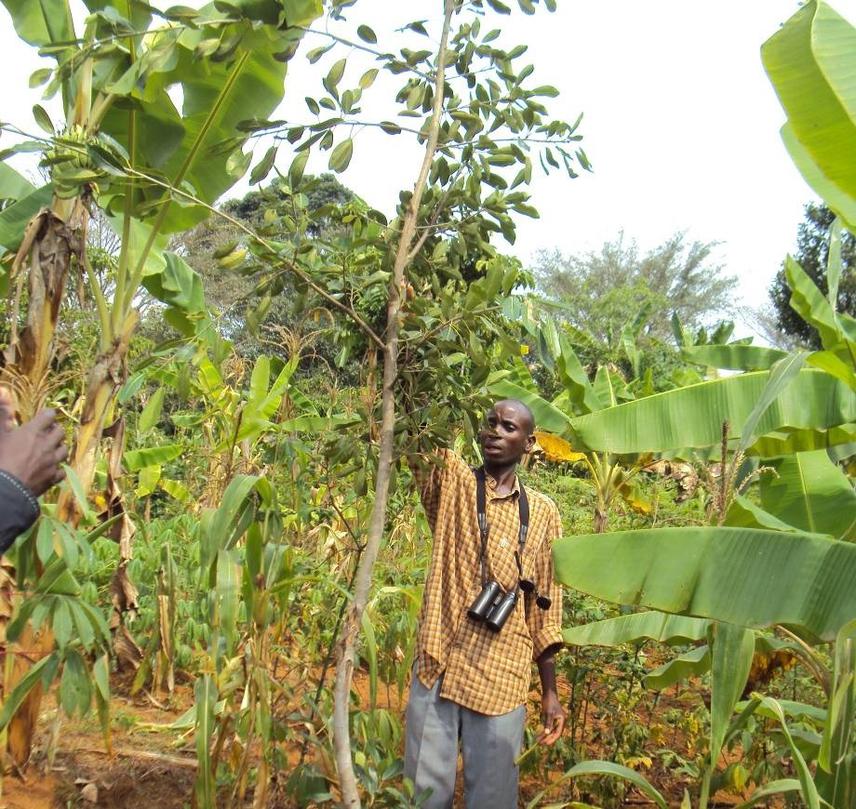Seguya Henry Kizito
Other projects
20 May 2013
Integrating Cultural Values with On-Farm Biodiversity Conservation for the Effective Conservation of Sangobay Forests in Southern Uganda
11 May 2015
Garnering More Support for Conservation of Sangobay Forest Reserve through Cultural Values Approach towards On-Farm Biodiversity Conservation
Through using cultural values approaches, the project builds on the previous projects funded by Rufford Foundation. The project aims at planting of culturally viable and agro biodiversity trees species on forest adjacent farms, creating awareness about conservation reflective of the Sangobay forest dynamics. Uniquely this project will also aims at integrating women in the barkcloth value chain through making crafts from barkcloth which if sold improve their livelihoods. The project will also aim at promoting cultural tourism around barkcloth making and other touristic features within the entire Sangobay and Kagera landscape.
Whereas the previous projects interventions were localised in the one sub county, a number of success were registered and these will be replicated into the entire Sangobay landscape. In doing so, the project will garner more support for the conservation of the Sangobay forests in a holistic manner and better advocacy efforts.

This project arises from the earlier projects funded by Rufford Small Grant with an aim of conserving Sangobay Central Forest Reserve (CFR) through improving the habitat integrity of the forest adjacent farms using cultural values approaches. Whereas the previous project phases focused on one Sub County, this project takes on a landscape approach encompassing all the communities around Sangobay CFR with an aim of replicating the previous project interventions and complementing them with relatively new ones. Some of the previous project interventions to be replicated throughout the landscape include but not limited to planting at least 10,000 culturally viable trees such as Ficus nantalensis, Mesopsis eminii within the Sangobay CFR landscape. This shall be complimented with the establishment of nursery beds where some species such as Mesopsis eminii are first planted. As with the previous projects sacred sites will be identified in the new areas and management plans for their conservation done and implemented.
Also, the project will engage in further training of the youths in barkcloth making and awareness creation. Previous project experiences have indicated that inclusion of youths greatly generates to the intergeneration transfer of knowledge which was less of a case before. Similarly engaging youths has indicated that this greatly contributes to the change of attitudes towards cultural values approaches and at the same time to the increased tree planting on forest adjacent farms.
For sustainability of the conservation efforts so far established in Sangobay, the project will seek to enhance the knowledge and skills of the communities in conservation through training in advocacy, community based organisation formulation and management, investigative biodiversity threats analysis and reporting among others.
All these will be emphasised in the new project areas as a means of promoting uniform interventions in Sangobay forest landscape and garnering more support in wider forest adjacent community.
Critical to this project is the targeting of women and integrating them in the barkcloth value chain by crafts making from barkcloth since it was highlighted from the different stakeholders that in a way they were alienated yet if involved can lead to better on farm tree planting initiatives and conservation of forest resources since they are the primary resource users. This in a way will contribute to their livelihood improvement. Similarly the project will also target promoting cultural tourism (especially barkcloth making) complimented with the other touristic features within the Sangobay landscape and beyond.